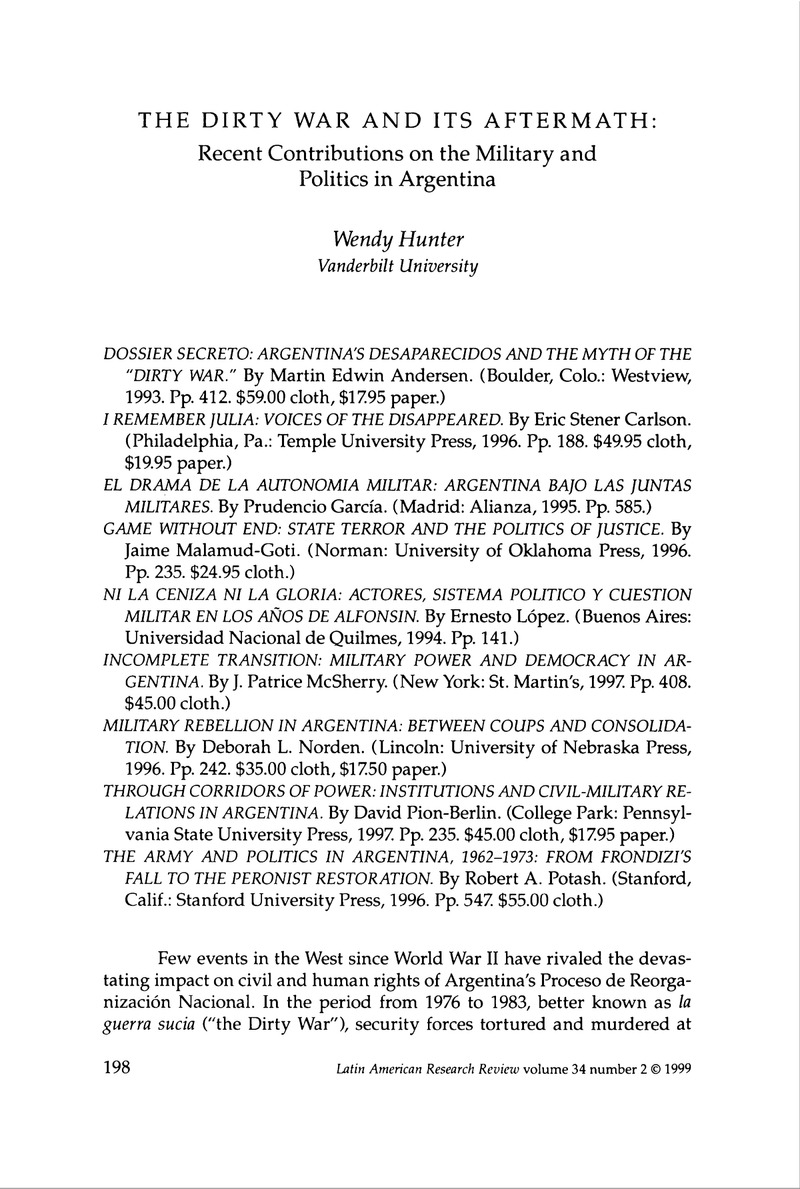AcuÑA, Carlos H., AND
Smith, William C. 1995 “The Politics of ‘Military Economics’ in the Southern Cone: Comparative Perspectives on Democracy and Arms Production in Argentina, Brazil, and Chile.” In
Political Power and Social Theory,
Vol. 9, edited by Diane E. Davis and Howard Kimeldorf, 121–57. Greenwich, Conn.: JAI.
Google Scholar 